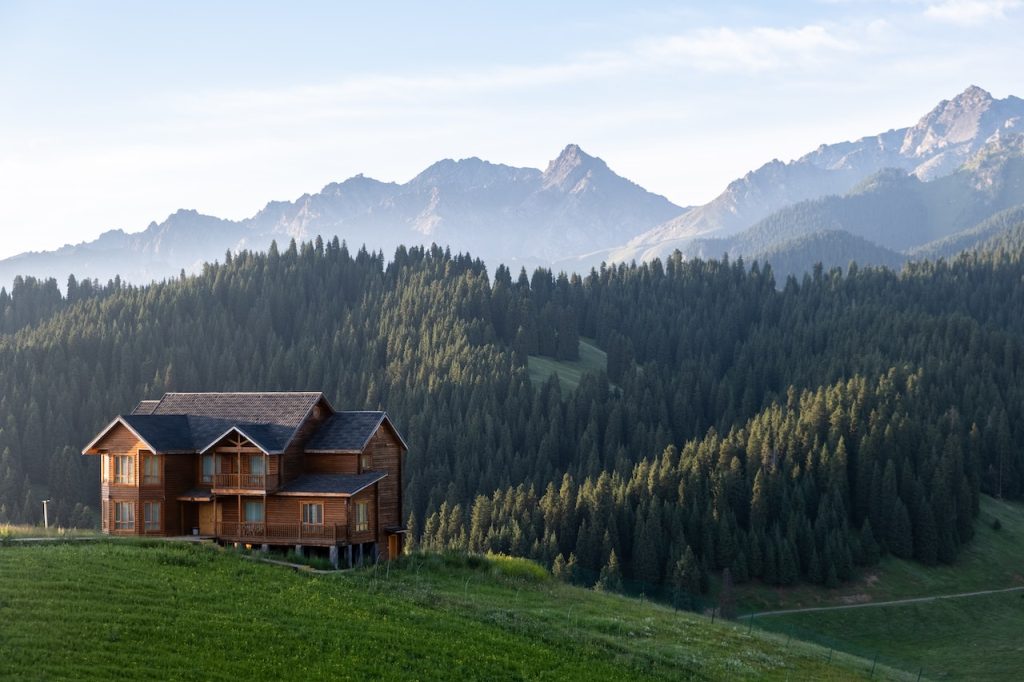# Embrace the Off-Grid Life: A Guide to Sustainable Farming and Gardening
Picture this: a crisp morning in the countryside, with the sun peeking over the horizon and the gentle sounds of nature stirring to life. You’ve just finished your morning coffee, which you brewed with water sourced from the nearby creek. The warmth of the sun on your face feels like an embrace, and the garden you’ve carefully nurtured is bursting with vibrant colors and greenery. This is not just a dream; it’s the daily reality of living off the grid and embracing sustainable farming and gardening. In this article, we’ll explore the joys and practicalities of cultivating your own food, the benefits of sustainability, and some pro tips to enhance your off-grid lifestyle.
## The Beauty of Going Off-Grid
Living off the grid is about more than just independence from public utilities; it’s a lifestyle choice rooted in sustainability, self-sufficiency, and a profound connection to the earth. Off-grid living encourages you to step back from a consumer-driven society and instead forge a bond with your land. Here, every seed you plant represents the promise of food, and every drop of rainwater you collect is a precious resource.
### Why Choose Sustainable Farming?
1. **Self-Sufficiency:** Growing your own food means you won’t have to rely on grocery stores, which can be particularly liberating. You have control over what goes into your body and can avoid the stress of supply chain issues.
2. **Environmental Impact:** Sustainable farming practices help preserve natural resources and biodiversity. By using organic methods, you’re contributing to a healthier planet.
3. **Economic Savings:** Though there may be initial investments for tools and seeds, the long-term benefits of growing your own food often outweigh these costs. With time, you’ll see the financial savings kick in.
4. **Health Benefits:** Gardening keeps you active and encourages a diet rich in fresh fruits and vegetables. There’s nothing quite like the taste of a sun-warmed tomato straight from the vine!
## Getting Started with Sustainable Farming
### Choose the Right Location
Finding the right patch of land is vital. Make sure it receives adequate sunlight (at least six hours a day), has good drainage, and is close to a water source. If you’re working with a small garden or patio, you can still grow delicious produce in containers.
### Soil Preparation
Your soil is your best friend. Conduct a soil test to determine its pH and nutrient levels. Adding organic matter like compost can boost soil fertility, improve drainage, and encourage beneficial microorganisms.
For a quick soil boost, mix in worm castings—a natural fertilizer that enriches the soil and promotes healthy plant growth.
### Choose Native and Heirloom Varieties
Native plants and heirloom seeds are adapted to your local climate and soil, making them hardier and easier to grow. Not only do they yield well, but they also help maintain biodiversity.
### Plan Your Garden Layout
Utilize companion planting to maximize space and deter pests. Certain plants, like marigolds, can repel harmful insects when planted alongside tomatoes or peppers. Square-foot gardening is another efficient method, allowing you to grow a variety of crops in a compact area.
## Watering Wisdom
Water conservation is key in sustainable farming. Employ techniques such as drip irrigation or soaker hoses to minimize evaporation. Collect rainwater in barrels, which can be used to water your garden during dry spells.
**Pro Tip:** Mulching with organic materials like straw or wood chips can help retain soil moisture, reducing the frequency of watering.
## Nurturing Your Plants
Regular observation is essential for a thriving garden. Check for signs of pests and diseases frequently. Implement integrated pest management (IPM) strategies, which use natural predators like ladybugs or nematodes to keep harmful insects at bay.
**Pro Tip:** Build a pollinator-friendly garden by incorporating flowering plants. Bees, butterflies, and other pollinators play a crucial role in the health of your ecosystem and help increase crop yields.
## Harvesting and Preserving Your Bounty
Once your plants begin to bear fruit, the excitement truly begins. Harvest your crops at their peak ripeness for maximum flavor and nutritional value.
To ensure your harvest lasts, dive into the art of preserving—canning, dehydrating, or freezing are all viable methods to extend the life of your produce.
### Canning
Home canning is a fun and rewarding way to store the fruits (and vegetables) of your labor. Start simple with jams and jellies and advance to pickling vegetables or making sauces.
### Dehydrating
Dehydrating is another excellent method for preserving fruits and herbs. Invest in a dehydrator or use your oven at a low temperature to dry herbs like basil, oregano, or thyme.
## Cooking with Your Harvest
Once you’ve gathered your bounty, put it to good use in the kitchen! Seasonal cooking not only supports your sustainable lifestyle but also enhances your meals with fresh flavors. Try creating dishes that highlight your harvest:
– **Salad:** Toss together a variety of greens, radishes, and cherry tomatoes for a refreshing summer salad.
– **Stir-Fry:** Use your favorite vegetables and serve them over whole grains for a hearty meal.
– **Jams & Jellies:** Spread homemade strawberry jam on fresh bread for breakfast.
## Community Engagement
Living off the grid doesn’t mean living in isolation. Engage with your community by joining local farmers’ markets or participating in community-supported agriculture (CSA) programs. Sharing your knowledge and produce helps foster a vibrant local network and supports your neighbors.
### Learn and Share
Regular workshops on gardening, preserving, or even cooking can be a great way to not only improve your skills but also to build relationships with like-minded folks.
## Embracing the Seasons
Nature operates on a rhythm, and being in tune with the seasons can enhance your off-grid living experience. Plan your gardening activities—planting, sowing, and harvesting—according to seasonal changes. As the seasons shift, so too will the crops you cultivate.
## Conclusion
Choosing to live off the grid and embrace sustainable farming is not just a lifestyle; it’s an enriching journey. The blend of hard work, creativity, and connection to nature can lead to a fulfilling life filled with purpose and peace. So grab those seeds, dig into the soil, and take your first step toward a sustainable and vibrant future.
### Pro Tips Summary
– **Soil Preparation:** Test your soil and enrich it with organic matter.
– **Watering Practices:** Utilize rain barrels and mulch to conserve water.
– **Crop Choices:** Favor native and heirloom varieties for better adaptation.
– **Cooking Seasonal:** Make the most of your harvest with fresh, seasonal recipes.
– **Community Engagement:** Participate in local workshops or farmers’ markets.
By harvesting the wisdom of nature and embracing sustainable practices, you’re not just cultivating a garden; you’re nurturing a lifestyle that connects you to the earth and your community in a meaningful way. Remember, the best moment to start is now—dig in and grow your dreams!



